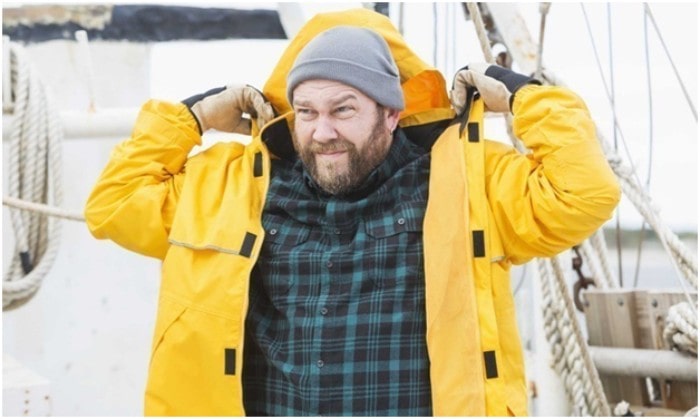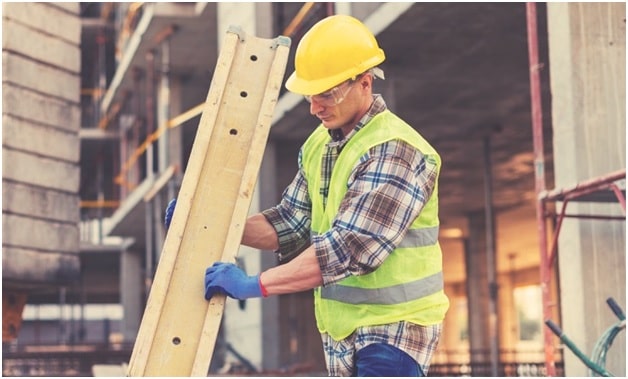
Working outside can be rough, both during winter and summer, but the work doesn’t just stop when the seasons change. Biting chill, howling winds, and driving rain may all affect the quality of work performed, the safety of your crew, the morale of your crew, and the time it takes to get the job done. Since time is coin, spending a little now to ensure you provide the best winter work environment for your crew will reflect in the work completed in the long run, not to mention staff retention and company reputation. Check out a few of the ways you can mitigate the challenges your crew faces during winter construction.
It might seem strange to start with talking about a rest area in an article discussing improving work, but don’t underestimate the power of a warm, dry break area. If your crew can’t take the opportunity to thaw out during the day, they will work less efficiently and put out lower quality work. If you don’t have access to a trailer for this purpose, a tent with portable heaters might fit the bill. Signs that workers are suffering from a cold-related injury can include erratic thoughts and behavior, excessive shivering, struggling to form cohesive sentences, and slurring of words.
Now that we’ve covered the maybe-not-so-obvious number one resource, let’s move on to number two. The correct personal protective equipment (PPE). During winter construction projects, this moves beyond the basic hard hat and gloves. Use-appropriate waterproof gloves will keep hands warm and dry, not just protecting workers’ hands but maintain their dexterity to perform essential tasks safely and effectively. We’d also recommended waterproof rainwear to keep workers dry, as is suggesting that workers bring a dry change of clothes just in case. Waterproof gear designed for outside work will not hinder crews while they power through the weather.
Do your crew need to handle items that have metal handles? It’s imperative that these items are covered with a thermo-insulated material, particularly in freezing conditions. While workers should be wearing their gloves, crews and management should take additional precautions when possible. Another note while we mention gloves – helmet liners for hard hats can make an enormous difference in crew comfort.
PPE eyewear is an essential part of a winter construction kit. When face protection is also worn, the eyewear should be a separate piece from the nose and mouth to avoid condensation fogging the glasses and inhibiting clear vision. Eyewear that shields the wearer against harmful UV-light and glare from snow, wind, and blowing rain or snow, will provide additional protection. Protective eyewear is always an important part of construction safety gear, but even more so in harsh winter conditions. The eyes have a considerable amount of blood flow, so not only will effective eye protection reduce irritation but it will help prevent heat loss.
If your construction crew is working on an indoor project, using propane heaters to warm the area can make a significant difference in keeping workers warm and safe, especially if not working in an energy-efficient space. There are several safety factors to consider when using a propane heater, such as that crews ensure hoses stay clear of high-traffic areas, and can’t snag on equipment.

Another less obvious resource that can produce significant changes in the productivity of a crew through winter construction is appropriate training regarding the hazards faced, and the related precautions that should be taken. Training workers to recognize the signs of cold-related stress or injury, and when to seek medical help for these instances, could be the difference between a less-than-ideal project management system and potential tragedy. This point also includes training for site managers on topics such as job rotation when possible, or the duration of outside work scheduled. Keeping a close eye on the weather forecast, especially in areas where heavy snowfall, strong winds, or other significant weather may occur.
While safe, functional vehicles and equipment are an important resource at any time of year, it becomes a critical factor in winter. Carry out regular maintenance and safety checks on a more frequent schedule when equipment is used in poor conditions. Oil, fuel, and hydraulic fluid should all match the conditions the crew uses the equipment in. You might also consider adding a winter-specific emergency kit to vehicles. Designate a safety officer to inspect heavy equipment or that used off-road such as forklifts, cranes, and skid-steers for ice, snow, and mud build-up.
Creating a checklist that the site manager maintains and is available to workers is a great resource for ensuring winter safety in construction. Covering factors such as this may be beneficial in the event of an insurance claim to evidence that you took suitable measures on the job site to ensure worker safety. There are many items that workers should provide for themselves, such as layered and weather-appropriate clothing. The construction company should provide important safety items such as gloves, hard hats, and eye protection to ensure they meet quality standards.
